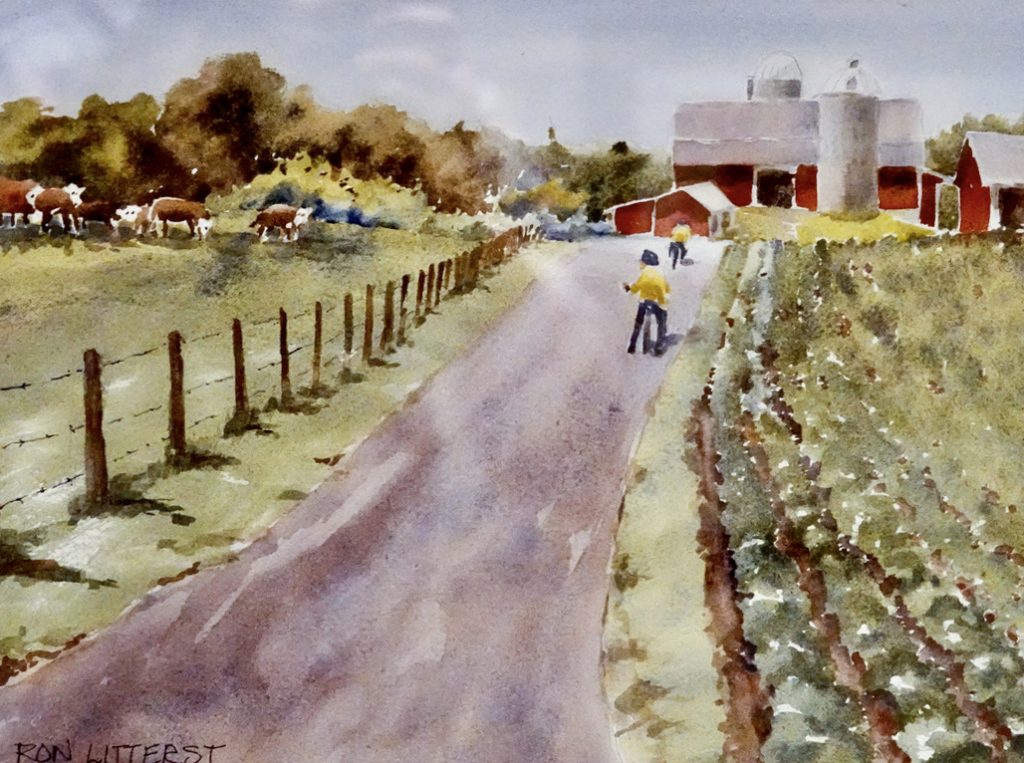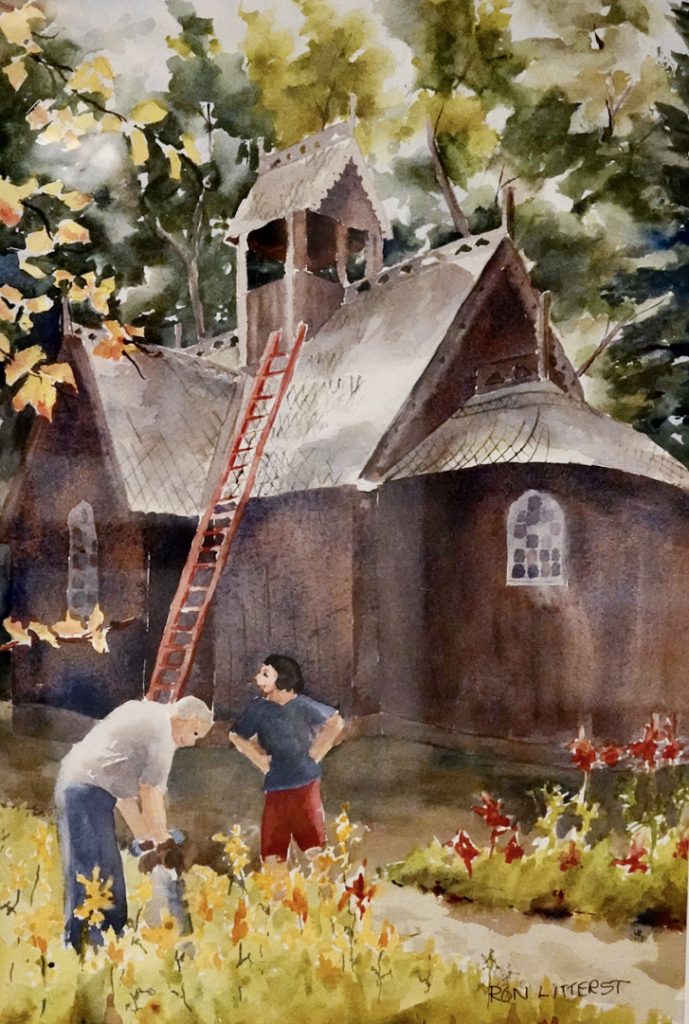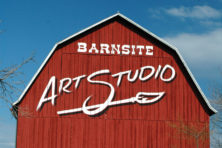Ron Litterst the Painter: A journey from law to fine art
- Share
- Tweet
- Pin
- Share

When Ron Litterst was a trial attorney defending individuals and companies in lawsuits around Peoria, Illinois, he often told jurors to think of his presentation as a paint-by-numbers exercise.
“My job was to fill in each of those squares until hopefully I finished a painting that they could all see,” Litterst said. “I was really filling in that painting with words and visual effects instead of color.”
So when his daughter gave him a gift certificate to Peninsula School of Art for his 70th birthday, Litterst used it to take a watercolor class with Kari Anderson. One workshop turned into 20 workshops, and that’s not counting 14 years of taking classes with Ed Fenendael, whom Litterst credits with much of his progress as an artist.
“He has been the most important mentor to me,” Litterst said. “He’s just been wonderful all these years and is such an encouraging person.”
Once, Litterst took four of his paintings to Michaels to be framed. The framer asked to buy one, but Litterst said they weren’t good enough to sell. Now he has only one left.

He enjoys painting familiar scenes, such as Wilson’s in Ephraim and the Hardy Gallery with its graffiti walls, and he often donates paintings of popular sites to nonprofits for fundraising raffles. But Litterst also enjoys taking in new perspectives of popular locales.
While on a bike ride with friends through Björklunden in Baileys Harbor, for instance, he came across a couple at the back of the well-known chapel, with a red ladder leaning against the roof. A fellow biker captured the scene with her cell phone and sent him the image, which he pondered for several years before painting it in two sessions with Fenendael.
“What were they doing with the ladder?” Litterst said. “Were they talking or arguing?” The painting doesn’t say, leaving that to the viewer.
With people taking shorter vacations, they may not take the time to look deeply at art or revisit galleries to look at specific paintings multiple times. Litterst hopes that by including people in his paintings, he encourages the viewer to look longer, or to look again, perhaps to speculate about what the people in his art are doing or thinking.
Every year, Litterst and his wife, Lois, host plein air painters for Peninsula School of Art’s weeklong plein air festival. He likes to show the visiting painters around the county and point out some of his favorite spots. He often finds himself looking at a favored barn while the artist with him is attracted to a scene in a different direction.

“It’s interesting to talk to them about why they chose that instead of the scene I’d always admired,” he said.
Litterst is always learning new things. He may take a class in a different subject matter than he’s currently painting, listening for techniques he can use to make his work better. One example is a teacher using umber and French ultramarine blue to make gray. From another class, he learned about negative painting: leaving the core subject unpainted while painting around it.
“It’s really effective with grasses and flowers – Brigit Austin is great at it,” Litterst said. “But you know, this area is so full of wonderful watercolorists. It’s just amazing. I really have enjoyed being up here, painting up here and meeting all these artists. And it’s not just the people who paint, but the great number of people who appreciate painting.”
Litterst’s involvement in painting came at a good time: at the end of his time as a lawyer, when he faced an identity crisis.
“I was known as Ron Litterst, lawyer, and then all of a sudden I’m not a lawyer anymore, and I am just Ron Litterst, period.” he said. “After I had painted for three or four years, people started saying, ‘This is Ron Litterst the painter.’ It gave me a new name, and I really appreciate it.”


